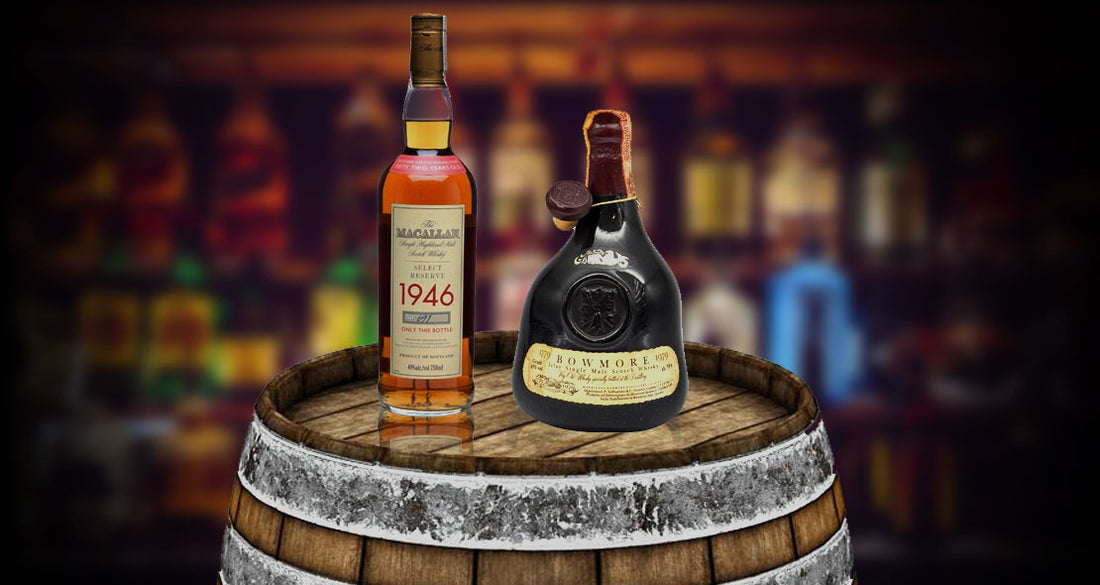A lot of people often ask us - what makes a bottle of whisky rare and investible? The answer - rarity, quality and age. If you have one of the three you are doing well. If you have two out of the three, then you have a great bottle. If you have three out of the three, you have a full house and the ultimate collector’s item. By and large people look to these three factors when considering to part with large sums of money for that one-off bottle. These are the top 3 criteria that collectors look for when selecting that elusive bottle.
Let’s start with rarity. Individually numbered bottles released from distilleries, that have now closed in the 80’s and 90’s are rare. Small batch releases and single cask offerings from the same period are the same. Don’t be fooled by current bottles in the supermarket or duty free shops that state ‘limited edition’ or ‘small batch release’ on the label. They aren’t. Well, possibly they are if you consider 100,000 bottles to be limited edition. Do your homework and don’t be sucked in by the promise of a 'limited edition' the next time you are at an airport duty free shop. We have had many excited calls from our customers asking whether they should buy a bottle they have seen. They think they have found a rare gem of a whisky. We point out to them that that rare gem is on offer in most airports around the world. The answer is always a firm ‘no’ if it’s in a supermarket or an airport. To be fair the marketers do a fine job!
See our offer on the Hibiki 12 - a great entry level investment whisky that is rising in price every year!
Now on to QUALITY..... Arguably, the quality of the whisky produced in the 1960s-1990s was a whole lot better, as it wasn’t mass produced to the same level it is now. Also, the majority of the work from grain to bottle was done by hand. Now there are expensive machines in modern distilleries performing most of the manual tasks. We have been involved in many back-to-back tastings including a current bottle and one from an age gone by with the same age statement. The difference is subtle but remains in favour of the older offering. You can tell when the whisky was produced as it will specify a vintage on the label.
Finally, AGE. By maturing a malt longer in the barrel, it will ultimately produce a better end result. During maturation, chemical reactions take place between the alcohol and the barrel. These reactions increase the amount of esters and aldehydes in the whisky. Beside the sherry or bourbon remainders in the barrel wall, the alcohol also extracts tannins, vanillin and caramel from the wood. You cannot speed up time and cannot argue with science. A 40 years old whisky will be far more complex than that of a 10 years old.
The problem with many rare whiskies pre millennium when they were on sale, is they were just another bottle of whisky on the shelf. They have only become rare over a period of time. Very few people set out to buy a bottle of whisky in the 80’s and 90’s and didn’t drink it. Collecting or investing would certainly have raised a few eyebrows back then. That is the reason rare bottles are so scare today, as most of it has been consumed, lost or damaged. What we have left, is all there is ever going to be, to share around everyone. That number grows smaller with every passing year due to lack of supply and an insatiable global demand for rare whisky. If you happen to own a rare whisky, a genuine rare whisky, then we have good news for you…. it’s only going to become more rare.
To summarise, if you are looking to buy a rare whisky we would strongly recommend: It should have an age statement and preferably a vintage; it should be an individually numbered bottle or drawn from a single cask; and it should be distilled pre 1990’s.
Please contact us if you have any comments or questions regarding buying the best whisky investment, or wish to sell some of your collection. We would love to hear from you.
Rare Whisky Buying Guide
admin










